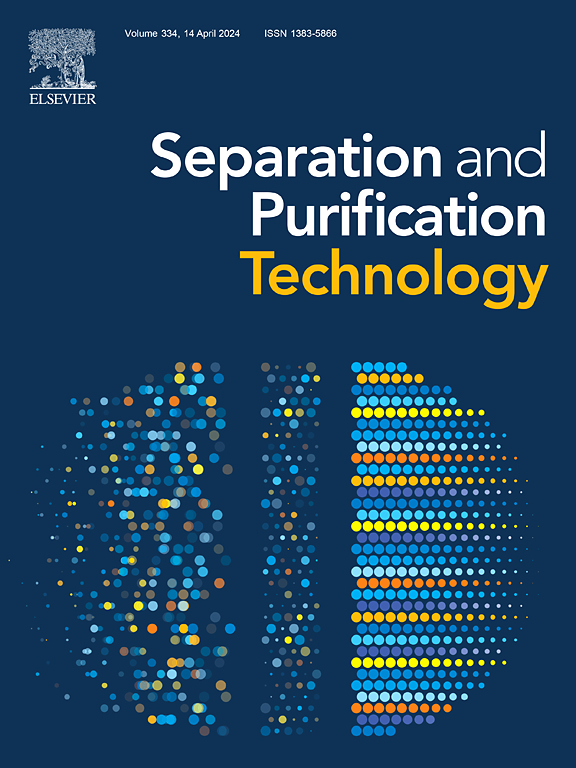Dual contribution of recyclable oxidants and generated superoxide anion (O2–) for the selective recycling of spent LiFePO4 batteries
IF 8.1
1区 工程技术
Q1 ENGINEERING, CHEMICAL
引用次数: 0
Abstract
Hydrometallurgy involving acidic and oxidative chemicals is currently the main lithium extraction technology for the selective recycling of spent LiFePO4 (LFP). However, the excessive use of chemicals is a major concern in hydrometallurgy, leading to a significant rise in operational costs and environmental impact. Herein, sodium phosphomolybdate (PMS) with Keggin-type anion [PMo12O40]3− is employed as an efficient and recyclable oxidant to achieve selective Li extraction from spent LFP. After oxidizing LiFePO4 to FePO4, reduced PMS could be re-oxidized by activating O2 to superoxide anion (![]() O2–), causing PMS to be reusable. The unique oxidation of PMS and in situ generated
O2–), causing PMS to be reusable. The unique oxidation of PMS and in situ generated ![]() O2– synergistically contributes to lithium ions leaching, resulting in a high Li extraction efficiency (96.79 %) with a relatively low PMS/Li (0.1:1). The PMS solution which was generated by adjusting the pH can still maintain a high Li extraction efficiency (>91 %) even after being recycled ten times. This recyclable oxidant and in-situ generation of
O2– synergistically contributes to lithium ions leaching, resulting in a high Li extraction efficiency (96.79 %) with a relatively low PMS/Li (0.1:1). The PMS solution which was generated by adjusting the pH can still maintain a high Li extraction efficiency (>91 %) even after being recycled ten times. This recyclable oxidant and in-situ generation of ![]() O2– facilitates rapid and efficient lithium extraction, offering significant economic benefits and highlighting its potential as a comprehensive solution for spent LFP management.
O2– facilitates rapid and efficient lithium extraction, offering significant economic benefits and highlighting its potential as a comprehensive solution for spent LFP management.
求助全文
约1分钟内获得全文
求助全文
来源期刊

Separation and Purification Technology
工程技术-工程:化工
CiteScore
14.00
自引率
12.80%
发文量
2347
审稿时长
43 days
期刊介绍:
Separation and Purification Technology is a premier journal committed to sharing innovative methods for separation and purification in chemical and environmental engineering, encompassing both homogeneous solutions and heterogeneous mixtures. Our scope includes the separation and/or purification of liquids, vapors, and gases, as well as carbon capture and separation techniques. However, it's important to note that methods solely intended for analytical purposes are not within the scope of the journal. Additionally, disciplines such as soil science, polymer science, and metallurgy fall outside the purview of Separation and Purification Technology. Join us in advancing the field of separation and purification methods for sustainable solutions in chemical and environmental engineering.
 求助内容:
求助内容: 应助结果提醒方式:
应助结果提醒方式:


